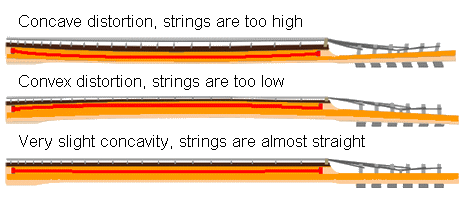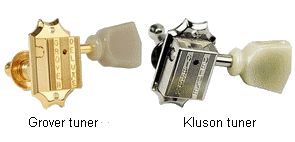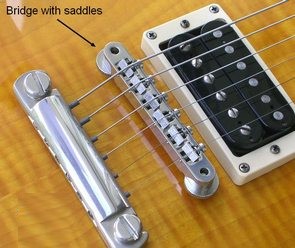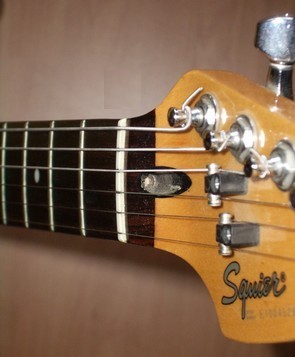How to choose a guitar

Are you looking to purchase a guitar?
Congratulations on taking the first step towards becoming a musician! However, the process of choosing a guitar can be overwhelming, especially for beginners. There are various types of guitars, brands, and models to choose from, and each guitar has its unique features and characteristics.
In this guide, we will take you through the essential factors to consider when choosing a guitar and offer you some guitar tips on how to set up your guitar for optimal playing experience.
Table of Contents
If you’re thinking about buying a guitar, there’s a lot to choose from. You can find something that fits your needs between super expensive models and those on sale. People often get mixed advice from friends or salespeople who have their own preferences or brand loyalties. When looking at guitars, it’s more about the quality than whether one model is better than another, like a Stratocaster versus a Les Paul.
Here are a few things to consider when buying an electric or acoustic guitar:
Type of Guitar
The first factor to consider is the type of guitar that suits your playing style. There are various types of guitars, such as acoustic, classical, and electric guitars. If you are a beginner, we recommend starting with an acoustic guitar as they are more affordable and easier to play than electric guitars.
Brand and Budget
The brand and budget of the guitar are crucial factors to consider. Go for a guitar from a reputable brand. Good brands are usually reliable because they have a reputation for making decent to excellent instruments. They also tend to offer better warranties and customer service, plus it’s easier to find parts if you need them. A well-known brand guitar will also hold its value, so you can sell it for a good price later on.
Your budget will determine the quality of the guitar you can purchase. As a beginner, we recommend investing in a decent-quality guitar that will serve you well for a while. You don’t want to purchase a cheap guitar that will frustrate your playing experience or require constant repairs.
Guitar Construction
The body style of the guitar affects the sound and comfort of playing. There are various guitar body styles such as the Dreadnought, Jumbo, and Grand Auditorium for acoustic guitars and Stratocaster, Les Paul, and Telecaster for electric guitars. Each body style offers a different tone and playing experience, and it’s essential to choose a body style that suits your preferences.
Check that the guitar is well-made with all parts securely attached. This is key for good sound and tuning. Make sure things like switches, knobs, and jacks on an electric guitar don’t make noise. If they do, see if it can be fixed. Sometimes, moving them back and forth or switching them a few times helps.

Guitar Neck
The neck and frets of the guitar also play a significant role in the playing experience. It’s essential to choose a guitar with a comfortable neck that fits your hand size. The neck should be straight because a bent or warped neck can affect the guitar’s sound. Most electric guitars have an adjustable truss rod inside the neck to fix any bending. Many high-quality acoustic guitars have this feature too.

Frets
The number of frets also affects the range of notes you can play, and it’s essential to choose a guitar with enough frets to meet your playing needs.
Play along the frets to check for unwanted vibration. When pressing a note, the string shouldn’t cause other frets to resonate. Guitars with an adjustable nut can have this issue fixed.
Test the same chord at different fretboard positions to ensure purity of tone in all positions. The note at the twelfth fret should sound exactly one octave higher than the open string. If not, inquire in-store about adjustments.
Machine Heads
An essential guitar component, tuners should operate smoothly but with some resistance. If tightening the tuner doesn’t gradually increase tension until the string suddenly tightens, it may indicate improper string winding around the post.
Check the mechanism’s quality by observing if the strings maintain tension or slacken. If the guitar is fine otherwise, consider replacing the tuners with high-quality ones, such as Grover or Kluson, which come in metal housings.

Guitar Pickups
If you are purchasing an electric guitar, the pickups and controls are essential features to consider. Pickups are responsible for converting the guitar’s vibrations into an electrical signal, while controls allow you to adjust the guitar’s tone and volume.
Set-Up and Maintenance
After purchasing your guitar, it’s essential to set it up correctly for optimal playing experience. The setup includes adjusting the guitar’s neck, bridge, and truss rod to ensure the guitar is in tune and easy to play. Regular maintenance is also necessary to keep your guitar in good condition.
Adjusting the Bridge
Almost all electric guitars have a bridge whose height is adjustable. The bridge usually has two set screws with springs, but there are models that you can adjust with small wheels.
Many models have a bridge that allows you to adjust each string separately. In that case, the bridge consists of six individual pieces which you can adjust higher or lower and move forward or backward by adjusting screws.
If the bridge shifts from its position as the strings stretch, it may cause tuning issues. If your guitar sounds perfect in open E but out of tune with a barre chord in the middle of the neck, you need to adjust the string length using the bridge. Turning the screw of a particular saddle moves it forward or backward, allowing you to correct any intonation issues.

Adjusting the Neck
The neck’s truss rod, a metal reinforcement, exerts about 4kg of torque per centimeter. You can adjust this torque with a screwdriver or hex key. Most guitars feature access to the truss rod at the headstock, covered by a plate. However, on some models, including many Fenders, the adjustment point is on the opposite end, where the neck joins the body.
Important: Never tighten the truss rod’s adjustment nut more than a quarter turn at a time. Allow a few hours for the neck to adapt because the wood needs time to settle. Adjustments should be made with the strings under tension.
To straighten the neck, turn the adjusting nut clockwise with a hex wrench. If the neck is too bowed, turn it counterclockwise to make it more concave.

Breaking Strings
Common reasons include:
- The strings are old and have lost their elasticity.
- The strings were not properly installed.
Ensure there are no kinks when installing new strings, as any small bump weakens the string, making it more likely to break. Avoid over-tightening, as thicker strings can withstand more tension but are harder to play.
Check for burrs on the bridge, saddles, or nut, which can also lead to string breakage. If any are found, gently sand them down with fine sandpaper until smooth.
Protection
Slight, gradual changes in weather won’t harm your guitar, but sudden shifts in temperature and humidity can damage the delicate woods it’s made from. Woods like rosewood, maple, cedar, and mahogany are chosen for their resonant qualities and strength but are susceptible to humidity.
A guitar is a balance of counteracting tensions. If parts expand or contract due to temperature changes at different rates, it can lead to problems. Excessive humidity can cause wood to swell and glued parts to come loose, while extreme dryness or heat can lead to shrinking or cracking.
Guitars leave the factory relatively dry, as the manufacturing environment controls temperature and humidity. A humidity level between 60% and 85% is considered safe for guitars with steel or nylon strings.
To maintain these conditions, place a damp cloth or a special humidifier in your guitar case’s string section to prevent drying. In humid climates, silica gel in the case can prevent too much moisture absorption.
Never place your guitar near heat sources. When moving from cold to warm environments, let your guitar acclimatize gradually in its case.
Cleaning
There are many maintenance products available for the guitar. Most electric and acoustic guitars are lacquered. Dirt or grease on acoustic guitars can mute the sound. To remove dirt and polish the guitar, there are special products.
For the fretboard, special cleaners are available. Apply a few drops along the neck and rub it in well with a cloth. Let the fretboard dry, then buff it with a lint-free cloth.
Metal parts on an electric guitar, such as machine heads, pickups, and the vibrato handle, can be negatively affected by sweat and may oxidize. These components should always be wiped clean. This also applies to the metal strings and frets.
Here we wrote more about how to clean a guitar.
Guitar Cases
For those frequently on the road, a sturdy case is crucial. While bags offer some protection, hard cases made from compressed cardboard or chipboard provide much more. These are often lined with faux leather outside and soft material inside.
For more expensive guitars, reinforced plywood cases are best. They’re designed to support the neck and fit the body snugly, with stainless steel locks, hinges, and handles.
Fiberglass cases are also durable and tailored to fit your guitar.
Ensure the guitar fits tightly in its case to avoid damage from movement. The neck, in particular, needs proper support to prevent the head from snapping if dropped.
Prevention and Insurance
- Insuring valuable guitars is wise.
- Take photos and note unique details.
- Keep the serial number safe.
In case of loss or theft, the advice above is crucial. While good insurance is important, getting your guitar back, especially if unique, is preferable. Some websites allow you to register missing or stolen guitars. Check these sites if offered a guitar, to see if it’s listed as stolen.
Choosing a guitar requires careful consideration of various factors such as the type of guitar, brand and budget, body style, neck and frets, pickups and controls, and set-up and maintenance. By following these tips, you can select a guitar that suits your playing style and preferences and enjoy playing music for years to come.